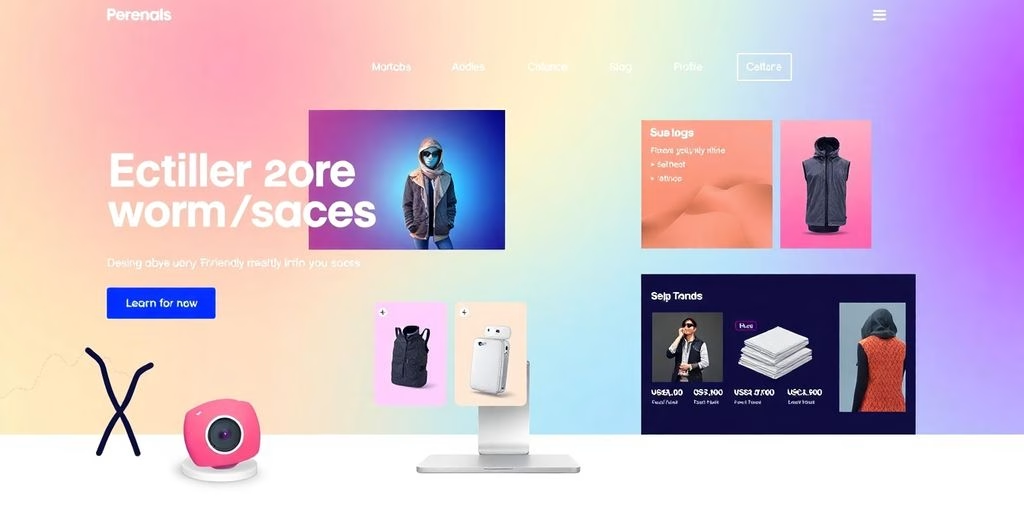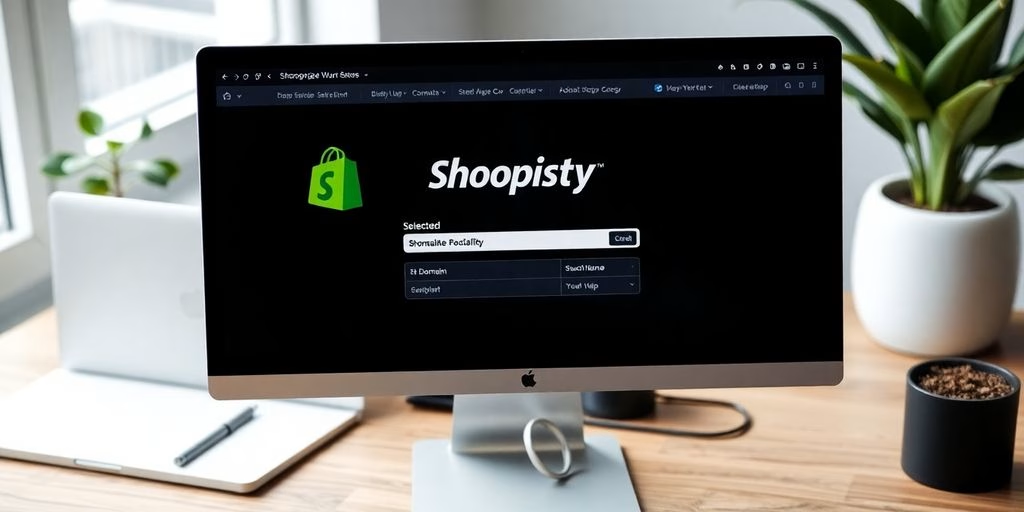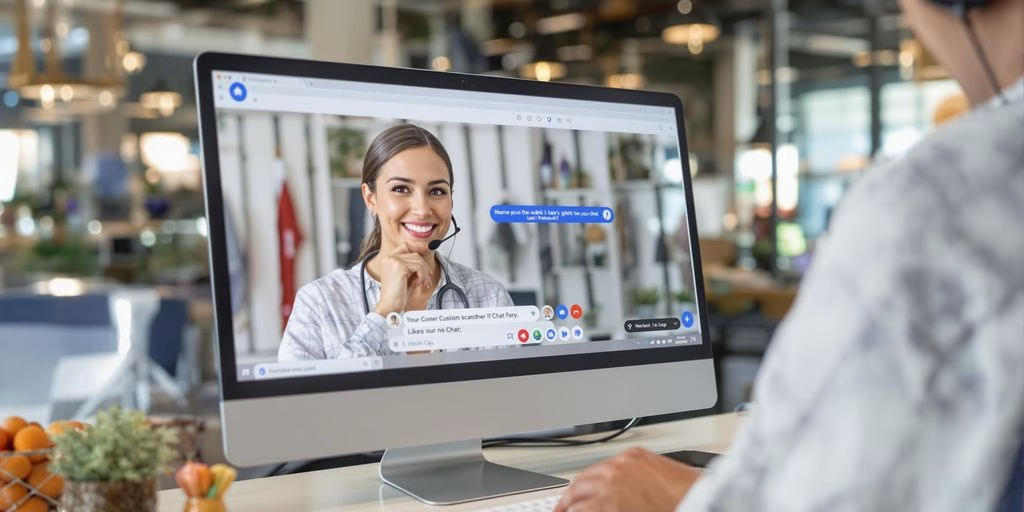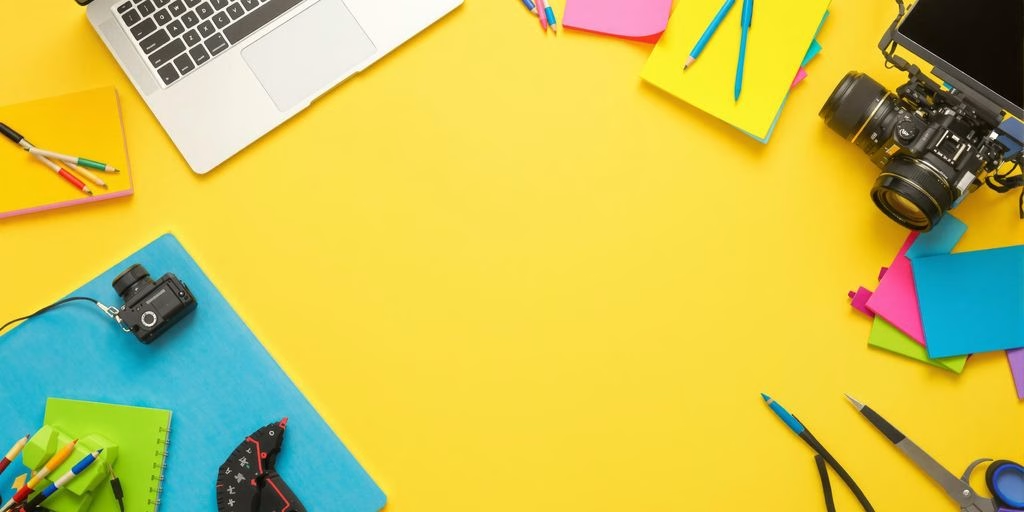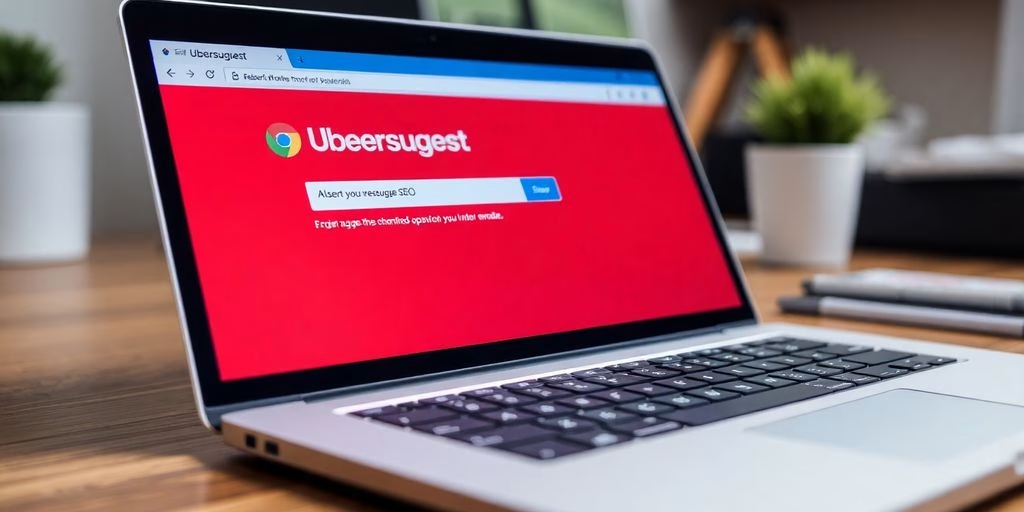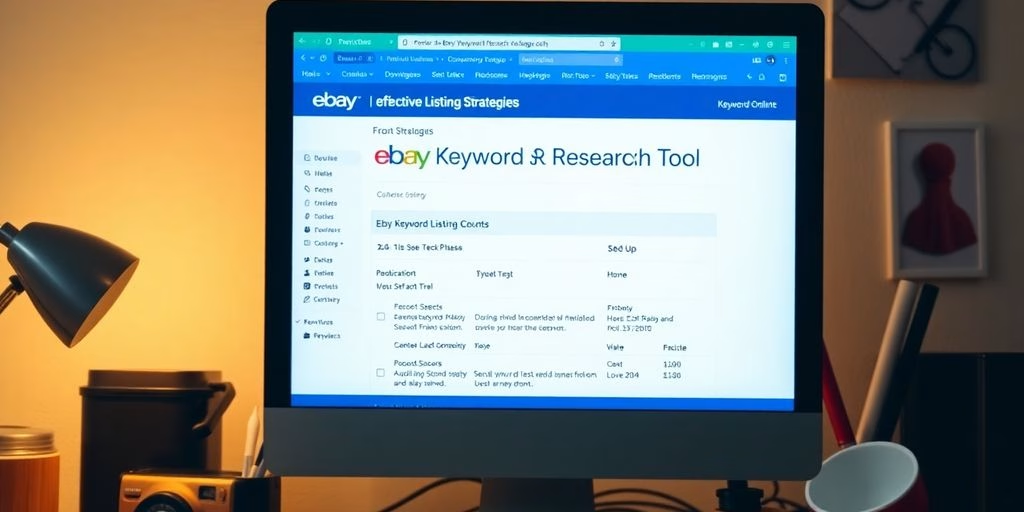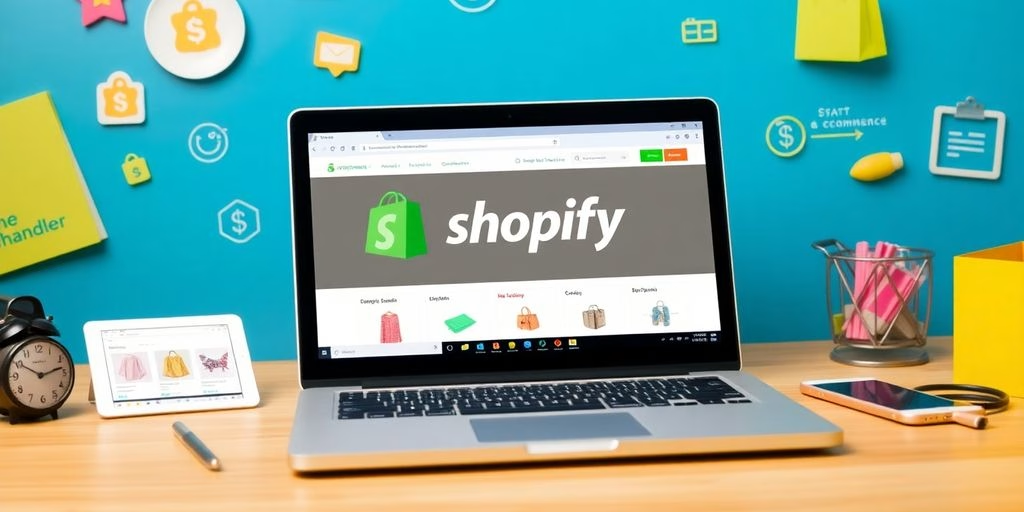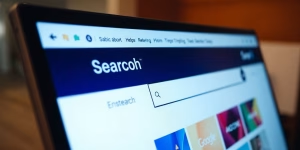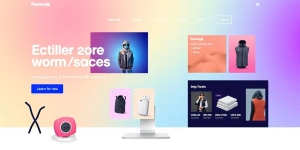Kita semua tahu bahwa menciptakan lingkungan web yang inklusif adalah hal yang sangat penting. Ini adalah artikel komprehensif yang membahas tentang pentingnya teks alternatif (alt text) untuk gambar di web. Panduan ini akan mengeksplorasi bagaimana teks alternatif berkontribusi pada internet yang lebih mudah diakses, memberikan pengalaman pengguna yang lebih baik, dan bahkan meningkatkan pengoptimalan mesin pencari (SEO).
Kami akan menawarkan saran praktis untuk membuat dan menguji teks alternatif yang efektif, mendemonstrasikan dampaknya melalui contoh dunia nyata, dan mengungkapkan bagaimana teks alternatif strategis dapat meningkatkan kehadiran online Anda, dari situs web hingga platform media sosial.
Daftar Isi
BeralihHal-hal Penting yang Dapat Dipetik
- Teks alternatif sangat penting untuk aksesibilitas web, yang memungkinkan pengguna dengan gangguan penglihatan untuk memahami konten gambar dan menavigasi situs web dengan lebih efektif.
- Penerapan alt text yang efektif melibatkan deskripsi yang jelas dan ringkas yang menyampaikan tujuan gambar, sekaligus mempertimbangkan manfaat SEO.
- Menguji dan memvalidasi teks alt memastikan bahwa teks tersebut sesuai dengan tujuan yang dimaksudkan untuk alat aksesibilitas dan perayap mesin pencari.
- Memasukkan kata kunci secara strategis ke dalam teks alt dapat meningkatkan SEO situs web, membuat gambar lebih mudah ditemukan dalam hasil mesin pencari.
- Mengoptimalkan meta tag media sosial dengan teks alt dapat secara signifikan meningkatkan keterlibatan dan berbagi sosial, memperluas jangkauan konten Anda.
Membuka Rahasia Teks Alt untuk Web yang Lebih Inklusif

Mengapa Teks Alt Penting untuk Aksesibilitas
Bayangkan menavigasi web tanpa kemampuan untuk melihat gambar secara visual. Bagi banyak orang, ini adalah kenyataan sehari-hari, dan alt text menjadi mata mereka, melukis gambar dengan kata-kata. Teks alt adalah landasan aksesibilitas webmemastikan bahwa semua pengguna, terlepas dari kemampuan visualnya, memiliki akses yang sama ke informasi.
- Teks alternatif memberikan konteks untuk gambar, membuat konten dapat dipahami oleh pengguna pembaca layar.
- Ini berfungsi sebagai penampung apabila gambar gagal dimuat, menjaga aliran informasi.
- Dengan tidak adanya petunjuk visual, teks alternatif dapat meningkatkan pemahaman bagi pengguna dengan disabilitas kognitif.
Dengan menerapkan teks alternatif, kami tidak hanya mematuhi standar aksesibilitas, tetapi juga merangkul lanskap digital yang lebih inklusif.
Ingat, teks alt harus ringkas namun deskriptif, sehingga pengguna dapat memahami esensi gambar tanpa merasa terbebani. Ini adalah tindakan penyeimbangan antara menjadi informatif dan tidak terlalu banyak detail. Dan meskipun teks alt sangat penting untuk aksesibilitas, teks alt juga berperan dalam SEO-lebih lanjut tentang hal itu nanti!
Membuat Teks Alternatif yang Efektif: Tips dan Trik
Menciptakan alt text yang menyanyikan lagu yang tepat untuk aksesibilitas dan SEO sedikit mirip dengan berjalan di atas tali. Anda ingin menyeimbangkan garis tipis antara deskriptif dan ringkas. Ingat, teks alt tidak hanya untuk mesin pencari; teks alt merupakan komponen penting bagi pengguna yang mengandalkan pembaca layar. Berikut ini cara untuk mendapatkan nada yang tepat:
- Tambahkan teks alt ke setiap gambar, tombol, dan elemen grafis yang menyampaikan makna.
- Bertujuan untuk mendapatkan deskripsi yang jelas yang merangkum tujuan gambar, dengan menggunakan tata bahasa yang tepat dan sedikit kreativitas.
- Jika sudah cocok, masukkan kata kunci target, tetapi jangan dipaksakan.
- Jaga agar tetap di bawah 125 karakter untuk menghindari pengguna yang kewalahan, tetapi jika diperlukan deskripsi yang panjang, gunakan
longdescatribut. - Lewati bagian pendahuluan "Gambar dari..." dan langsung masuk ke dalam narasi.
- Jika warna adalah tokoh utama cerita gambar Anda, sebutkanlah. Jika tidak, biarkan tujuan gambar menjadi pusat perhatian.
Perhatikan sisi teknis dari penerapan teks alternatif. Ini bukan hanya tentang menulis prosa yang sempurna; ini tentang memastikan bahwa prosa tersebut menjangkau audiens Anda. Baik Anda memperbaiki konten lama atau memulai dari awal, pilihlah metode yang terintegrasi secara mulus dengan CMS Anda dan benar-benar menerapkan teks alt di tempat yang dibutuhkan.
Ingat, teks alt adalah pintu gerbang untuk pengguna dengan gangguan penglihatan untuk merasakan aspek visual situs Anda. Ini adalah langkah kecil untuk sebuah perancang web, tetapi sebuah lompatan besar bagi inklusivitas.
Menguji dan Memvalidasi Implementasi Alt Text Anda
Setelah Anda membuat alt textsangat penting untuk memastikan bahwa obat ini tidak hanya hadir, tetapi juga ampuh. Menguji teks alt Anda seperti gladi resik untuk aksesibilitasDi sinilah Anda menyempurnakan performa gambar Anda untuk audiens yang mengandalkan deskripsi Anda. Berikut ini cara memvalidasi teks alt Anda seperti seorang profesional:
- Gunakan pembaca layar untuk merasakan pengalaman situs Anda seperti yang dirasakan oleh pengguna tunanetra.
- Lakukan pengujian pengguna dengan individu yang mengandalkan teknologi bantuan.
- Menerapkan alat bantu otomatis yang menandai gambar yang tidak memiliki teks alt atau mengidentifikasi deskripsi yang terlalu bertele-tele.
Ingatlah, ilustrasi yang mendetail dan tata letak yang bersih akan meningkatkan pengalaman pengguna, tetapi dampak emosional teks alt Anda yang benar-benar membuat situs Anda inklusif. Dan saat Anda mengoptimalkan gambar untuk kualitas dan kecepatan, jangan lupa untuk menulis Teks alt yang ramah SEO yang mengutamakan orisinalitas dan relevansi.
Kunci dari teks alt yang efektif bukan hanya mendeskripsikan gambar, tetapi juga memastikan bahwa deskripsi tersebut memiliki tujuan dan meningkatkan pengalaman pengguna di situs.
Seni Deskripsi Visual: Teks Alternatif Beraksi

Praktik Terbaik Teks Alt untuk Meningkatkan Pengalaman Pengguna
Dalam hal menenun kain web yang dapat diakses, alt text adalah benang merah yang mengikat gambar dengan maknanya. Teks alt yang baik dapat menjadi petunjuk bagi para tunanetramemandu mereka menjelajahi situs web dengan kemudahan yang sama seperti pengguna tunanetra. Berikut ini adalah beberapa praktik terbaik untuk memastikan teks alt Anda fungsional dan ramah pengguna:
- Buatlah ringkas namun deskriptif; anggap saja sebagai tweet untuk gambar Anda.
- Gunakan bahasa yang sederhana dan hindari jargon kecuali jika jargon tersebut khusus untuk industri dan diperlukan.
- Mencerminkan konten dan fungsi gambar, bukan hanya penampilannya.
- Lewati perkenalan 'gambar dari' atau 'gambar dari'; pembaca layar sudah mengumumkan gambar seperti itu.
Ingat, teks alt bukan sekadar renungan-ini adalah komponen penting dari desain inklusif yang dapat membuat atau menghancurkan pengalaman pengguna.
Teks alt harus disesuaikan dengan konteks penggunaan gambar tersebut. Misalnya, gambar yang sama mungkin memerlukan teks alt yang berbeda saat digunakan dalam konteks pemasaran dibandingkan dengan artikel instruksional. Dan meskipun teks alt sangat penting, namun penting juga untuk tidak menggunakannya secara berlebihan. Gambar dekoratif yang tidak memiliki tujuan informasi tidak boleh dibebani dengan deskripsi yang tidak perlu yang dapat mengacaukan pengalaman pengguna pembaca layar.
Dengan mengikuti panduan ini, Anda akan memastikan bahwa teks alternatif Anda tidak hanya membantu, tetapi juga meningkatkan pengalaman pengguna secara keseluruhan. Bagaimanapun juga, tujuannya adalah membuat web yang dapat diakses oleh semua orang, dan itu termasuk memastikan bahwa setiap elemen, mulai dari video yang paling besar hingga ikon yang paling kecil, bersifat inklusif.
Yang Boleh dan Tidak Boleh Dilakukan dalam Menulis Teks Alternatif
Menjelajahi dunia teks alt bisa seperti berjalan di atas seutas tali di antara terlalu banyak dan terlalu sedikit informasi. Mencapai keseimbangan yang tepat adalah kunci untuk memastikan bahwa gambar Anda dapat diakses dan bermakna. Berikut ini adalah panduan singkat untuk membuat Anda tetap berada di jalur yang benar:
- Lakukan: Tambahkan teks alt ke setiap gambar, tombol, dan elemen non-teks yang penting agar konten Anda dapat diakses.
- Jangan: Buat pengguna Anda kewalahan dengan deskripsi yang panjang; jaga agar tetap di bawah 125 karakter atau gunakan
longdescatribut untuk penjelasan yang lebih panjang. - Lakukan: Jelaskan gambar dan tujuannya dengan menggunakan kata-kata yang jelas dan tata bahasa yang tepat.
- Jangan: Jangan gunakan lead-in seperti "Gambar dari..."; itu berlebihan dan pembaca layar sudah mengumumkan gambar.
- Lakukan: Sebutkan warna hanya jika warna itu penting bagi makna gambar, jika tidak, fokuskan pada tujuan gambar.
Ingat, teks alt bukan hanya sebuah renungan-ini adalah bagian integral dari pengalaman pengguna bagi mereka yang menggunakan pembaca layar. Membuat teks alt yang efektif sangat penting untuk kesuksesan SEO dan harus disempurnakan berdasarkan analisis dan umpan balik pengguna.
Berhati-hatilah terhadap jebakan teknis saat menerapkan teks alt. Tidak selalu sesederhana menambahkannya ke CMS Anda. Terkadang, Anda perlu menguji dan menemukan metode terbaik untuk kebutuhan spesifik Anda. Perhatian terhadap detail ini dapat membuat perbedaan besar bagi pengguna yang mengandalkan pembaca layar, dan ini adalah cara yang pasti untuk menghindari gangguan deskripsi yang tidak perlu.
Contoh Dunia Nyata: Teks Alt yang Berbicara Banyak
Jika menyangkut aksesibilitassebuah gambar mungkin bernilai ribuan kata, tetapi teks alternatif yang dibuat dengan baik bisa sama fasihnya. Contoh nyata dari teks alt menunjukkan kekuatannya untuk menyampaikan makna di mana visual tidak dapat dibaca oleh pengguna yang mengandalkan pembaca layar. Berikut adalah beberapa praktik terbaik yang dihidupkan:
- Keringkasan adalah kuncinya: A good alt text is concise and specific, avoiding unnecessary fluff that can distract from the image’s purpose.
- Context matters: Incorporating design principles for accessibility not only adheres to thesis accessibility requirements but also enhances the user experience for all.
- Keyword integration: While keywords boost SEO, they should fit naturally within the alt text, complementing rather than overpowering the description.
Remember, alt text is not just an SEO checkbox to tick; it’s a bridge to inclusivity, making every pixel on your site accessible to everyone.
Testing your alt text implementation is crucial. A common pitfall is assuming that alt text added through a CMS’s image library will automatically apply to the images on your site. Conduct a test to ensure your method is effective, and consider using a plugin for efficiency, especially if you’re updating older content.
Meningkatkan Permainan SEO Anda dengan Alt Text yang Strategis

Bagaimana Alt Text Mempengaruhi Peringkat Mesin Pencari
In the grand chess game of SEO, alt text is your knight in shining armor, ready to leap over obstacles and secure a strategic position on the search engine battlefield. Search engines adore images with descriptive alt text, as it helps them understand and index content more effectively. This understanding is crucial for images to appear in search results, especially in Google Image Search, which can be a significant source of traffic.
- Alt text provides context to search engines, clarifying what an image is about.
- It offers an additional opportunity to include target keywords.
- Proper use of alt text can lead to improved rankings for both standard and image search results.
By prioritizing the ethical use of alt text, websites may not only enhance accessibility but also potentially see improved rankings as search engines recognize the value offered to users with disabilities.
Remember, while alt text is a powerful tool for SEO, it’s essential to strike a balance. Overstuffing keywords can do more harm than good, confusing visitors and diluting the message your images convey.
Mengintegrasikan Kata Kunci ke dalam Alt Text Tanpa Berlebihan
In the quest for a search engine-friendly website, alt text emerges as a stealthy ally. Crafting alt text that is both descriptive and SEO-conscious is a balancing act; it’s about finding the sweet spot where aksesibilitas meets keyword optimization. Remember, alt text is primarily for users who can’t see images, so the description must be accurate and useful.
- Use a target keyword if it fits naturally.
- Keep it under 125 characters for succinctness.
- Avoid filler phrases like “An image of…”; they add no value.
- If color is crucial, mention it; otherwise, focus on the image’s purpose.
Strategic SEO tactics for long-term success involve crafting content that delivers value while optimizing for a user-friendly experience.
Avoiding the pitfall of isian kata kunci is crucial; it’s the neon sign in a library of your website—obtrusive and unwelcome. Instead, aim for a harmonious blend where keywords enhance rather than detract from the content. Beyond alt text, consider using image captions and descriptions to weave in keywords organically, always prioritizing the user’s experience.
Dampak Teks Alt pada Visibilitas Pencarian Gambar
Ketika berbicara tentang visibilitas of images in search results, alt text is the unsung hero. Search engines adore descriptive alt text; it’s like a secret handshake that says, “Hey, I’m relevant!” to the algorithm. By accurately describing the image content, alt text ensures that your images don’t just float in the digital ether but are anchored firmly in search results where they belong.
- Craft SEO-friendly content with relevant keywords in your alt text to give search engines a clear signal of what the image is about.
- Optimize your images for SEO by using descriptive file names along with alt text.
- Remember, alt text is not just for SEO; it’s a crucial component of web accessibility, making your images comprehensible to screen reader users.
While alt text is a powerful tool for improving image search visibility, it’s also a balancing act. Overstuffing keywords can do more harm than good, so always aim for natural, informative descriptions.
In the grand scheme of things, strategic SEO tactics for long-term success hinge on more than just alt text. It’s about delivering value to readers and optimizing the entire user experience, from meta tags to URL structure. And let’s not forget, updating the alt text of old images might not always be the best use of your time. Instead, focus on ensuring that your new content is fully optimized from the get-go.
Alt Text dan Penguasaan Media Sosial

Memanfaatkan Teks Alternatif untuk Keterlibatan di Media Sosial
In the bustling bazaar of social media, alt text is your silent salesman, whispering sweet nothings into the ears of algorithms and screen readers alike. Boldly embracing alt text on platforms like Instagram can skyrocket your content’s accessibility, ensuring that every potential follower gets a vivid picture of what you’re all about.
- Alt text enriches the user experience for visually impaired individuals, allowing them to participate fully in the social media narrative.
- It’s a savvy SEO sidekick, helping your images pop up in searches like a digital game of Whac-A-Mole.
- By enhancing image descriptions, alt text can boost engagement, making your posts more clickable and shareable.
Remember, alt text isn’t just a backstage pass for bots and assistive technologies; it’s a front-row ticket to inclusivity and engagement.
When you weave alt text into your social media tapestry, you’re not just ticking an accessibility checkbox. You’re crafting a more inclusive digital space, one image at a time. And let’s not forget, with great alt text comes great keterlibatan—a metric as coveted as the last slice of pizza at a party.
Mengoptimalkan Meta Tag Media Sosial dengan Alt Text
In the digital playground of social media, tag meta are the secret handshakes that introduce your content to the world. Optimizing these tags can catapult your shared links into the spotlight, making them more clickable and shareable. Alt text plays a pivotal role in this optimization process, not just for SEO, but for accessibility too.
When it comes to social media, the Open Graph protocol and Twitter Cards are your best friends. They dictate how your content is presented when shared, influencing first impressions and click-through rates.
Here’s a quick rundown on how to finesse your meta tags with alt text:
- Gunakan tombol
og:imagedengantwitter:imagetags to specify which image represents your content. - Pair images with compelling
og:descriptiondengantwitter:descriptiontags that tell a story. - Avoid common pitfalls like duplicate tags and keyword stuffing, which can muddle your message.
Ingat, alt text should be descriptive, painting a picture for both search engines and users who rely on screen readers. By menguasai desain grafis media sosial and the strategic use of alt text, you’re not just decorating your digital storefront—you’re ensuring it’s accessible to all.
Sinergi Antara Alt Text dan Berbagi Sosial
Dalam hal media sosial, alt text isn’t just an add-on, it’s a secret handshake to inclusivity that can amplify your content’s reach. Alt text bridges the gap between visual content and audience accessibility, ensuring that your message resonates with a diverse user base. By enhancing the shareability of your images, alt text can lead to increased engagement and a broader impact.
- Embrace imperfections: Show the human side of your brand.
- Membangun kepercayaan: Use alt text to convey transparency and reliability.
- Create shareable content: Infuse your images with value and emotion.
- Tailor to platforms: Customize alt text for different social media ecosystems.
Alt text is essential on social media because it makes the content more accessible to a wider audience. This not only fosters inclusivity but also enhances the user experience, leading to content that is more likely to be shared and celebrated across platforms.
Dive into the digital realm and master the art of online presence with our comprehensive guide on ‘Beyond the Screen: Alt Text and Social Media Mastery’. Enhance your accessibility and engagement on social platforms by understanding the importance of alternative text. Don’t miss out on the opportunity to elevate your social media game.
Hubungi kami sekarang for more insights and expert advice on digital marketing strategies that can transform your business. Let’s achieve remarkable success together!
Kesimpulan
As we’ve journeyed through the labyrinth of alt text and its pivotal role in web accessibility, it’s clear that this isn’t just a box-ticking exercise for compliance—it’s a gateway to inclusivity and SEO triumph. From ensuring your images are chattering away to search engines with keyword-rich descriptions to giving screen readers a narrative for the visually impaired, alt text is the unsung hero of the digital realm. So, let’s not just sprinkle alt text like confetti; let’s strategically place it like chess pieces, mastering the game of accessibility and SEO. Remember, a picture may be worth a thousand words, but the right alt text can make that picture speak volumes to everyone.
Pertanyaan Umum
Mengapa teks alt penting untuk aksesibilitas?
Alt text is crucial for accessibility because it provides a text alternative for images, allowing those with visual impairments to understand the content through screen readers. It also ensures that if images cannot be displayed, users still have context for the image content.
Apa saja praktik terbaik untuk menulis teks alt yang efektif?
Best practices for alt text include being concise, descriptive, and providing context. Avoid phrases like ‘image of’ or ‘graphic of’, as screen readers already announce the presence of an image. For decorative images, use an empty alt attribute (alt=””).
Bagaimana manfaat alt text bagi SEO?
Alt text improves SEO by providing search engines with context for images, which aids in indexing and understanding the page content. Good alt text can lead to images appearing in search results, driving additional traffic to your website.
Dapatkah alt text memengaruhi keterlibatan media sosial?
Yes, alt text can influence social media engagement by optimizing social media meta tags, like Open Graph and Twitter Cards. This enhances the appearance and descriptiveness of links shared on social media, potentially increasing engagement and traffic.
Apa dampak teks alt pada pengguna dengan disabilitas?
Alt text significantly impacts users with disabilities by providing them with a textual representation of images, which is essential for those using assistive technologies. It contributes to a more inclusive web experience and adheres to web accessibility guidelines.
Bagaimana cara memastikan teks alt saya diimplementasikan dengan benar?
To ensure proper implementation, test your alt text with screen readers and validate that it’s accurately applied to images on your site. Be aware that some CMS platforms may not apply alt text correctly, so it’s important to verify that your method works effectively.


